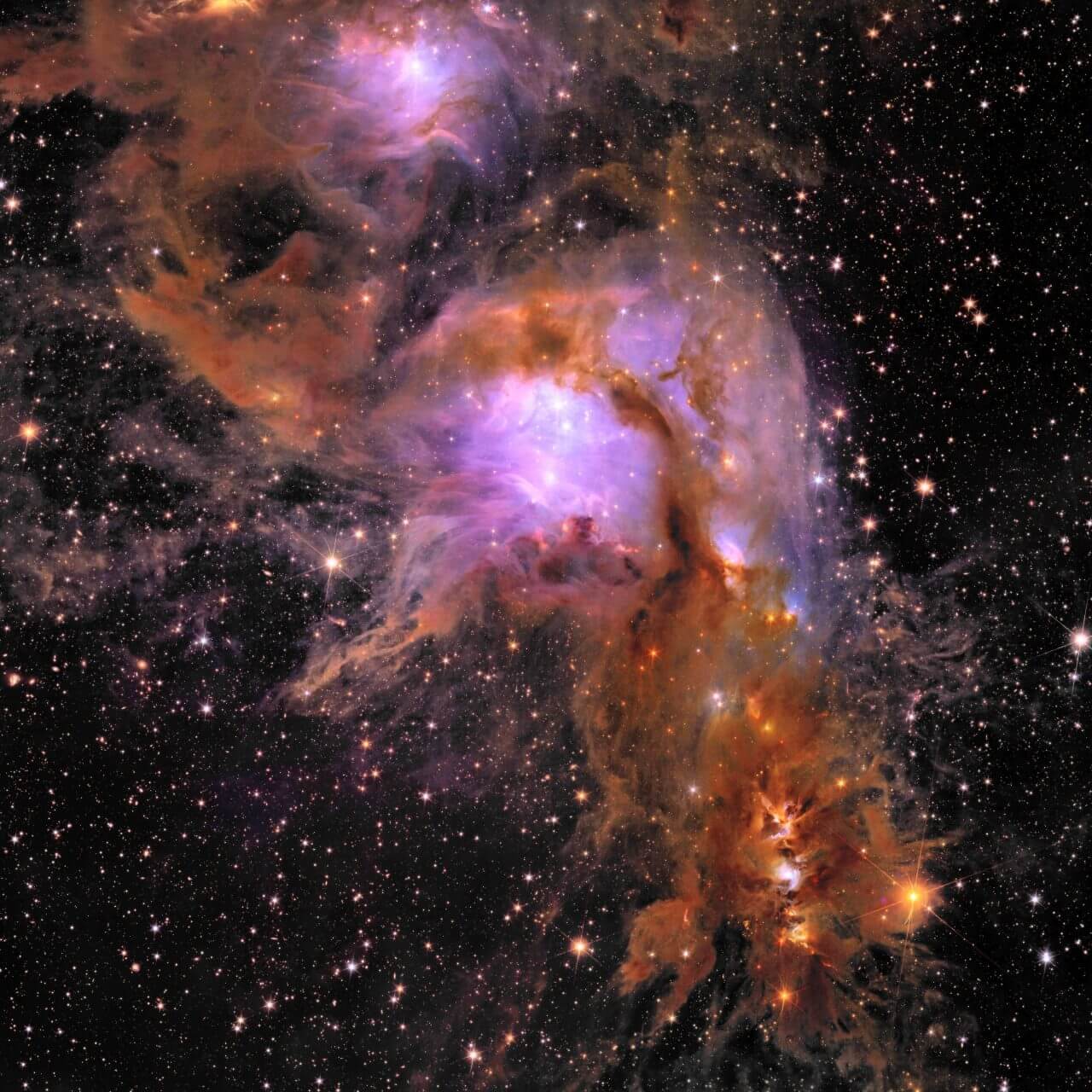This is an image of M78 (Messier 78), a reflection nebula located about 1,300 light-years away in the direction of the constellation Orion, and its surroundings. The bright part in the center of the image is M78, and the slightly smaller reflection nebula in the upper left is called “NGC 2071.” A reflection nebula is a nebula that appears to shine when a molecular cloud of gas and dust reflects starlight.

This image is based on data acquired by the Visible Light Observer (VIS) and the Near-Infrared Spectrophotometer (NISP) aboard the European Space Agency's (ESA) Euclid Space Telescope. The Euclid Space Telescope monitors not only visible light, but also infrared wavelengths that cannot be detected by the human eye, so images are colored according to the wavelength at the time of data acquisition (blue is about 700 nanometers, blue is about 1.1 micrometers (colored) . in green and about 1.7 µm in red).
According to the European Space Agency, the Euclid Space Telescope succeeded in observing M78 at an unprecedented level, which is known as the star formation region where new stars are born, and revealed the complex filamentous (string-like) structure of the molecular cloud in detail. In addition to mapping a large number of substellar objects(※)I discovered. Euclid's highly sensitive observing equipment is said to be capable of detecting large-mass objects such as several Jupiters, and more than 300,000 new objects are said to have been discovered within the field of view of the images alone. Researchers use Euclid observation data to investigate the abundance and ratio of stellar and substellar objects, which is key to understanding how stellar populations form and change.
*…objects below the minimum stellar mass where hydrogen fusion reactions can proceed, such as brown dwarfs and planetary-mass objects.
The Euclid Space Telescope, which was launched in July 2023, was developed to explore the secrets of dark energy and dark matter. Based on observational data from Euclid, which aims to image billions of galaxies, we will create a 3D map of galaxies distributed along the large-scale structure of the universe, which are thought to be shaped by dark matter as well. It is expected to deepen our understanding of dark energy, which is thought to accelerate the expansion of the universe. .
The first image was published by the European Space Agency on May 23, 2024.
source
- European Space Agency – New Euclid image of the star-forming region Messier 78
Editorial/Editing/Suray Department

“Travel maven. Beer expert. Subtly charming alcohol fan. Internet junkie. Avid bacon scholar.”






More Stories
It's better to call it a digital camera. The Xperia 1 VI lets you take any kind of photo | Gizmodo Japan
Google may be developing a new device called “Google TV Streamer” to replace “Chromecast”
What do you want to talk about? “Persona 3 Reload” recommendation campaign is running until July 31st! |.Persona Channel